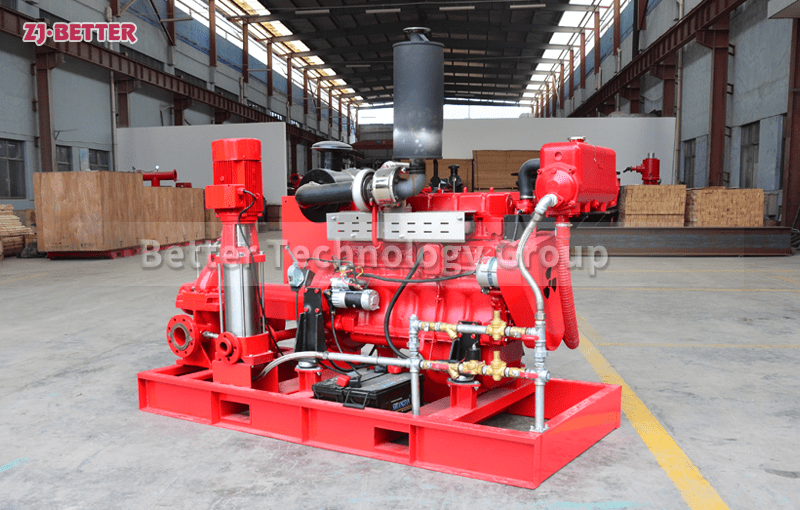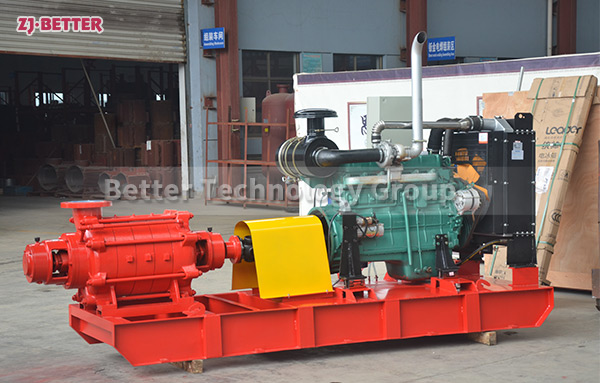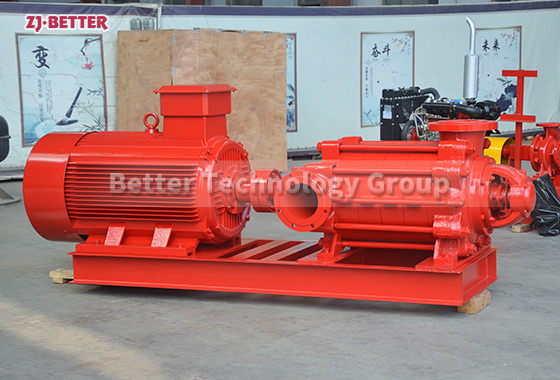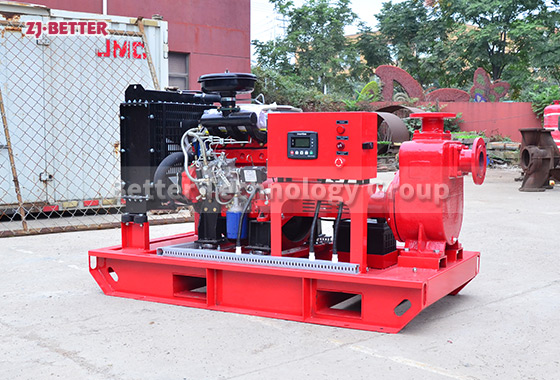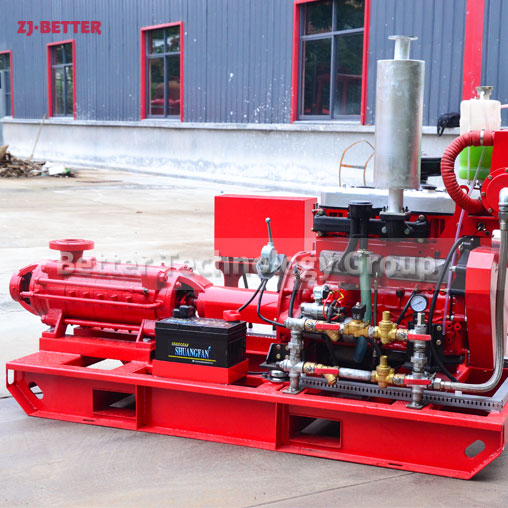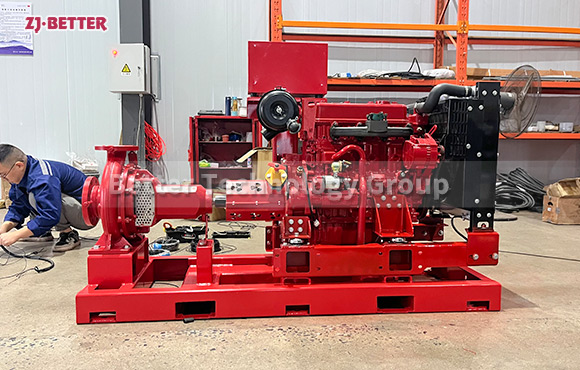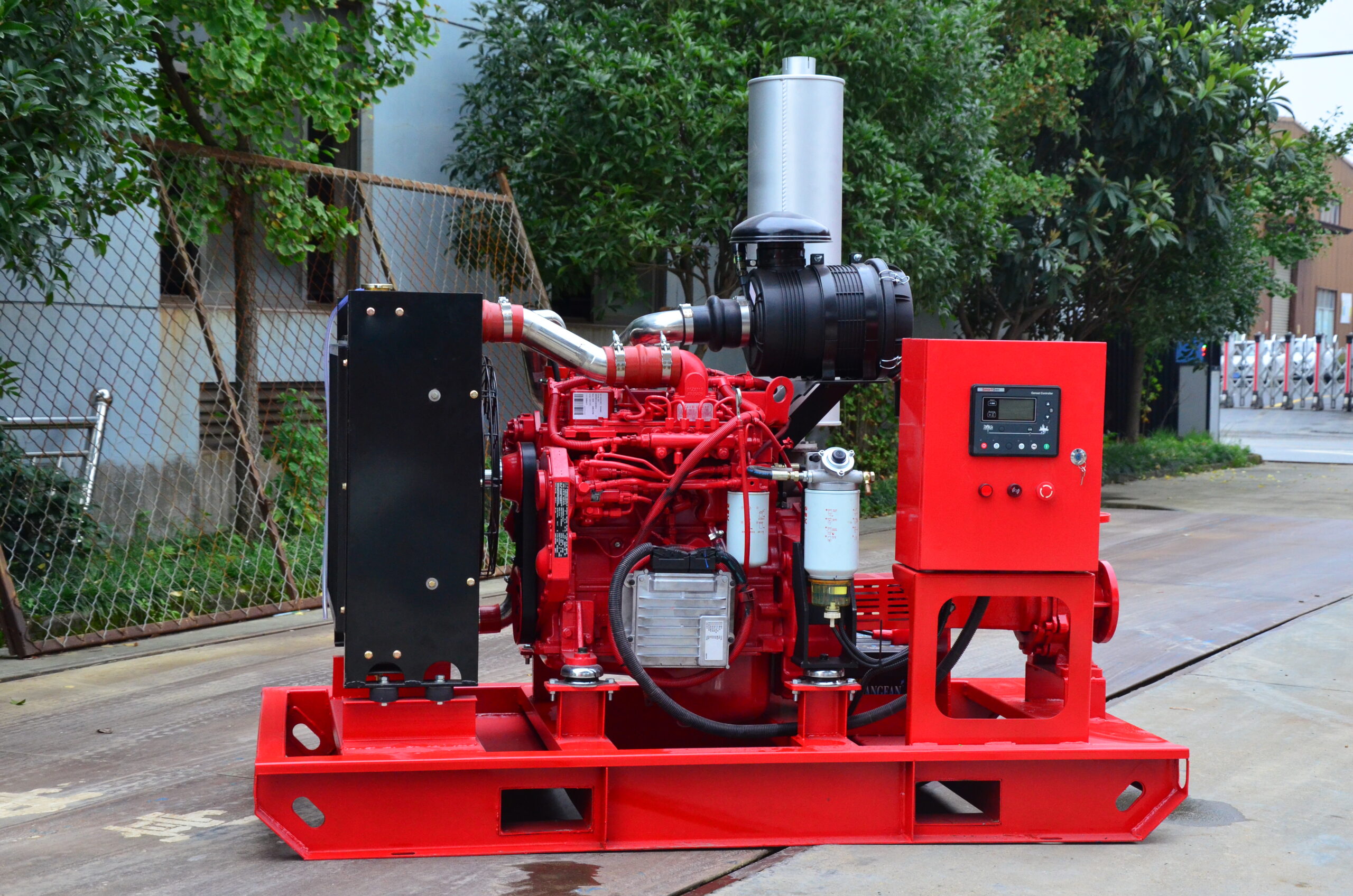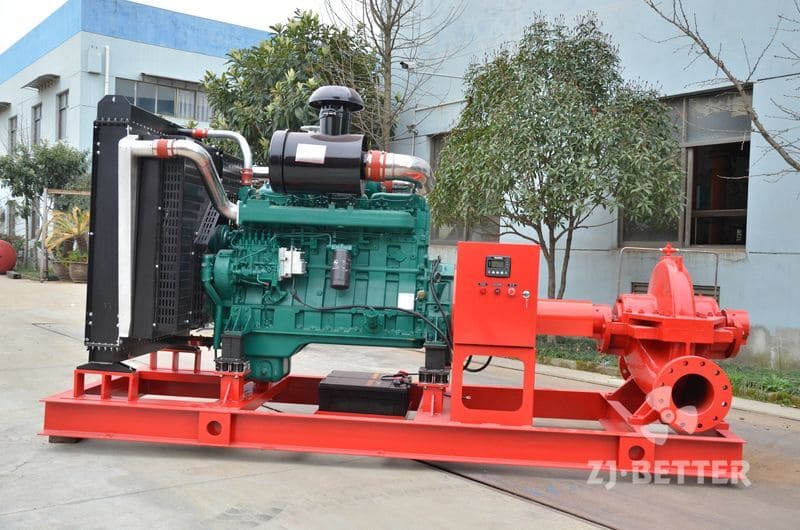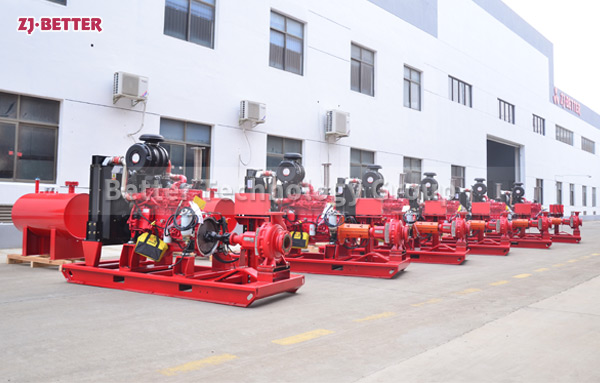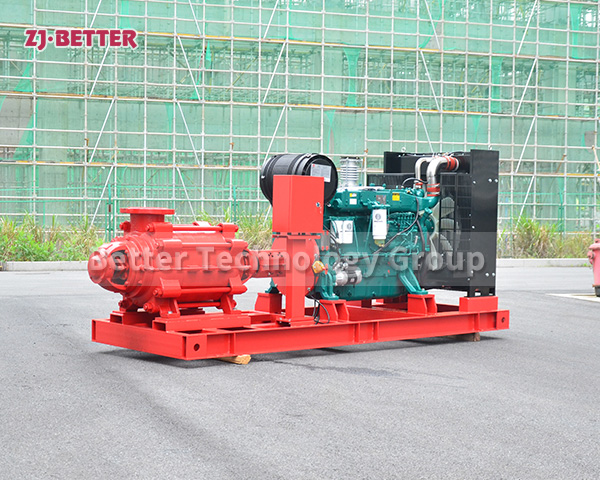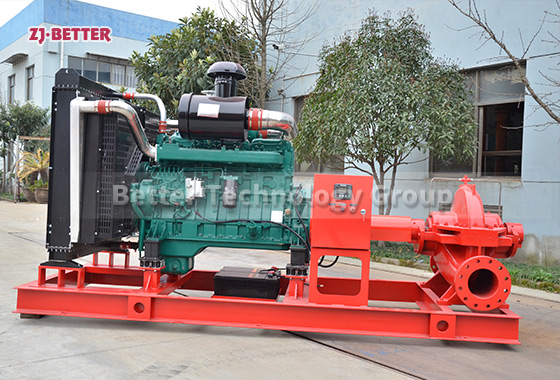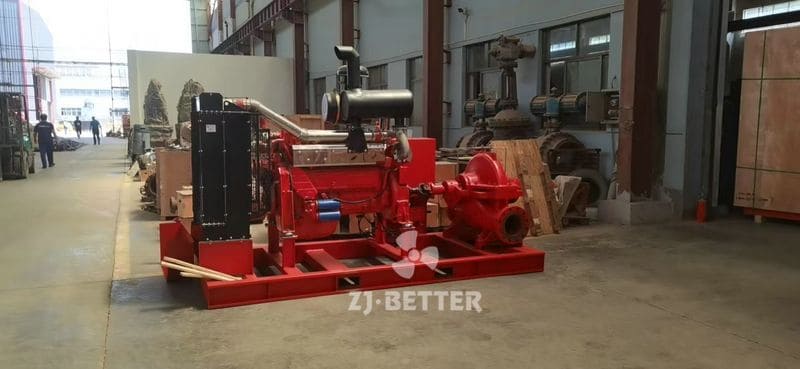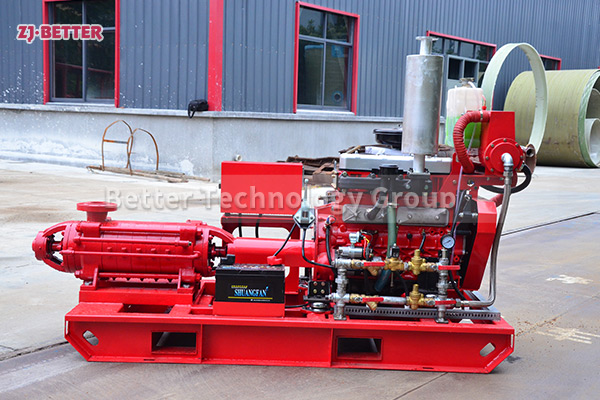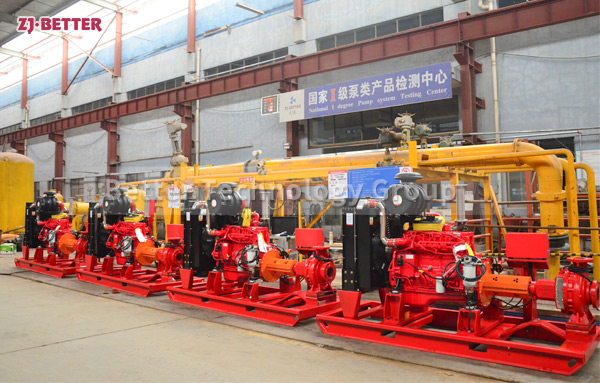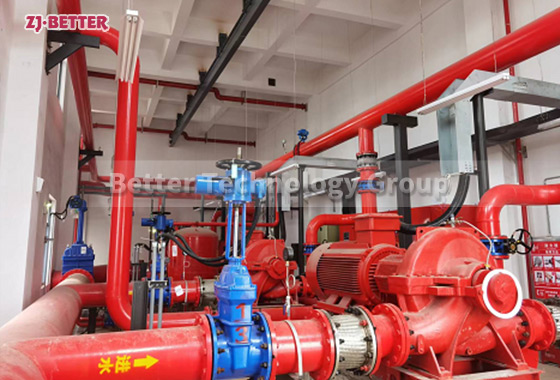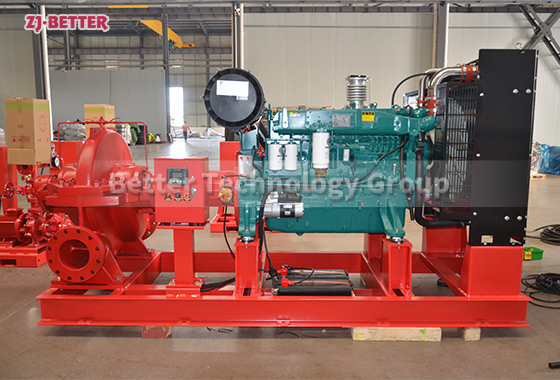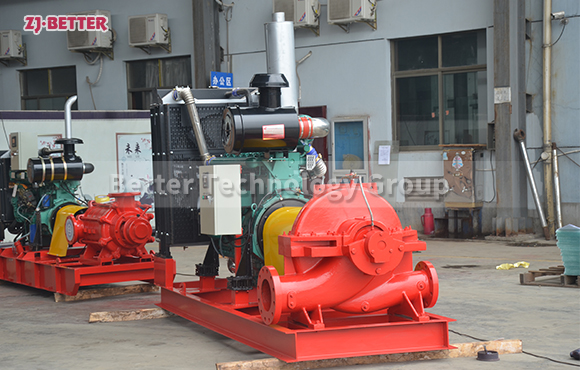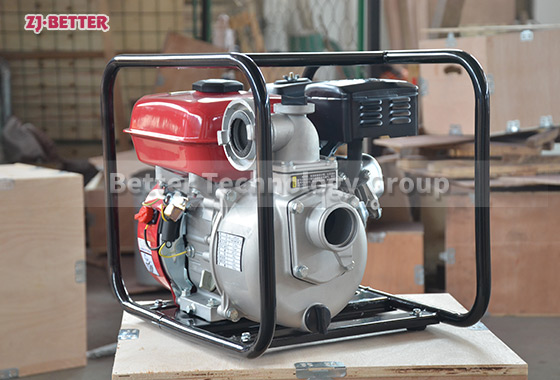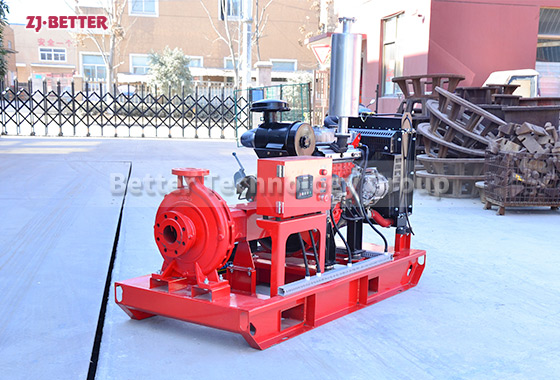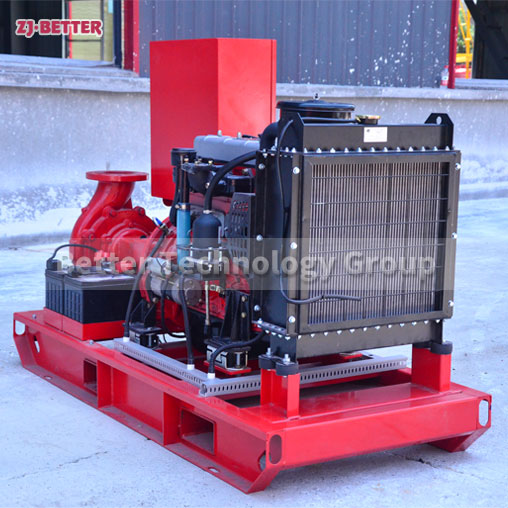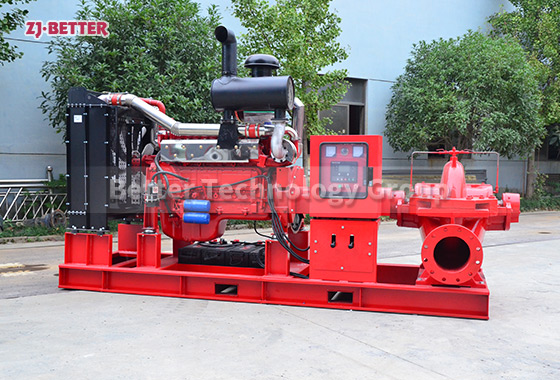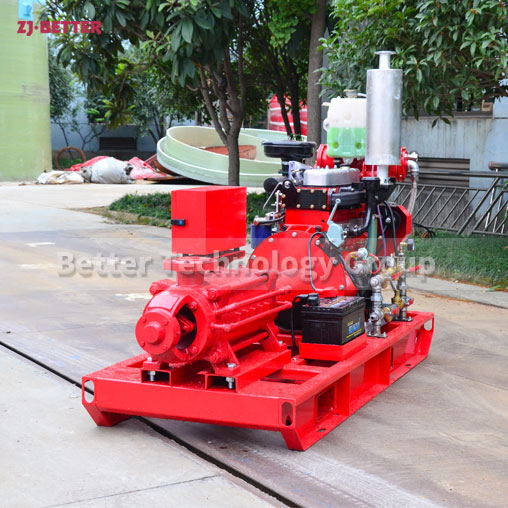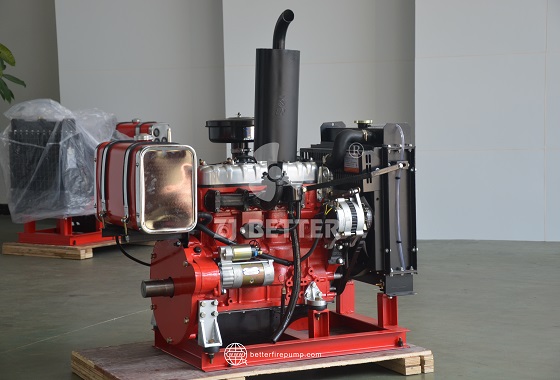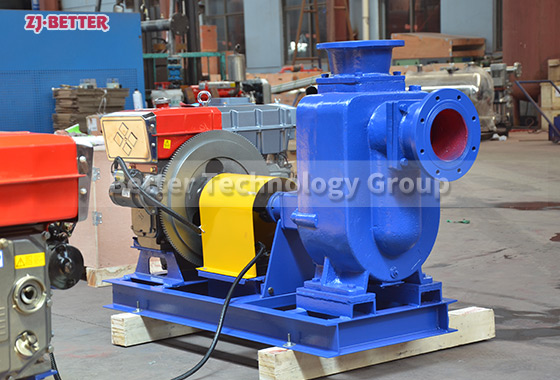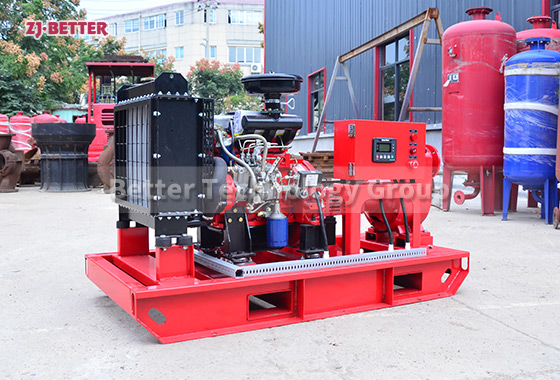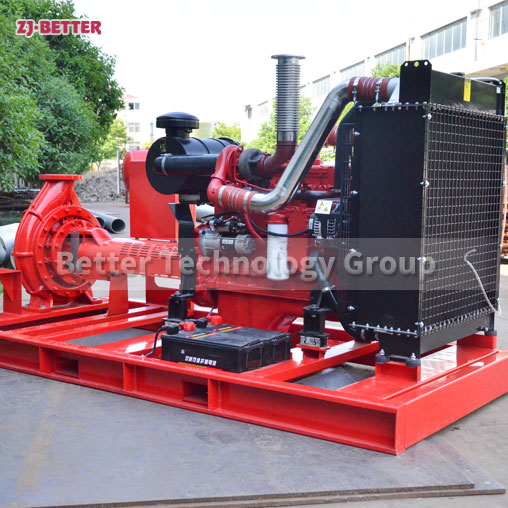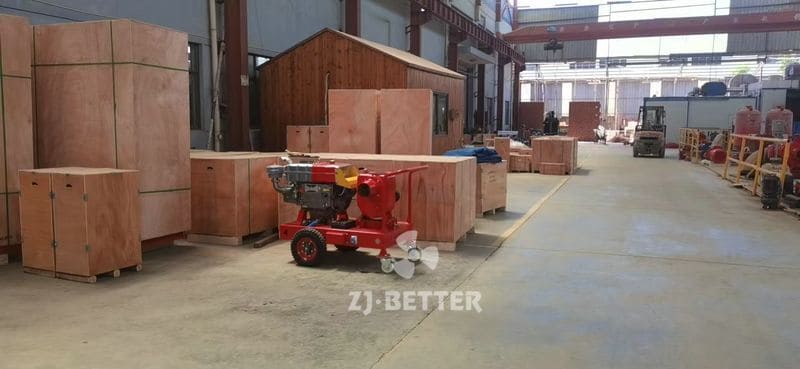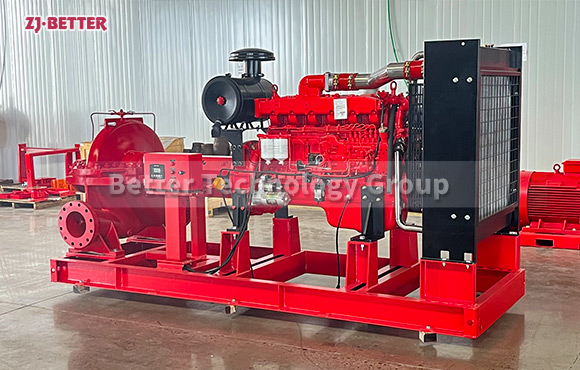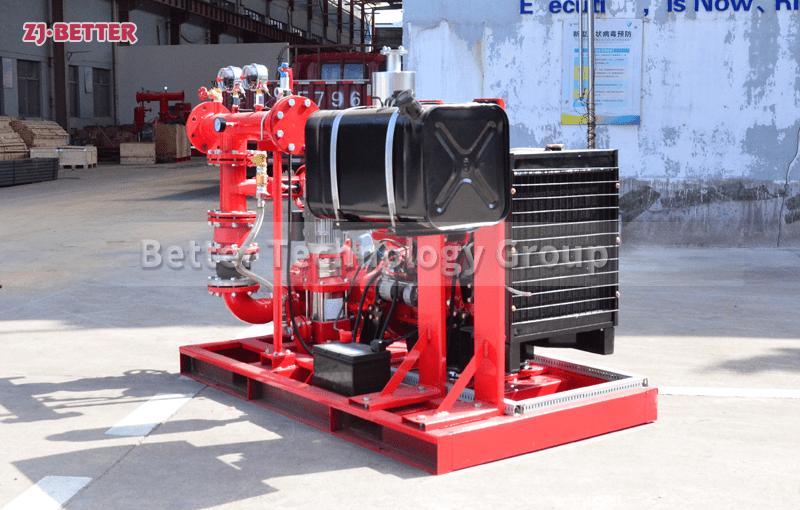1250GPM EJ Fire Pump Sets for Varied Applications
Flow: 30-9000 GPM
Head: 3-20Bar
Speed: 740-2900r/min
Material: HT200, SS304, Bronze
The EJ Fire Pump Set is combined an electric pump and a jockey pump.In various fields, our products find applications in large hotels, hospitals, schools, office buildings, supermarkets, commercial residences, subway stations, train stations, airports, various transportation tunnels, petrochemical plants, thermal power plants,oil storage tanks, large warehouses, industrial and mining enterprises, seawater injection, etc.
Types of pumps used for fire service include: End Suction Pump, Split Case Pump, Vertical Inline Pump and Vertical Turbine Pump.
1. Electric motor driven pump, can use single stage pump, horizontal split case pump, end suction pump,multistage pump.
2.Jockey pump, horizontal or vertical, capacity will be small, but head should be higher than electric and diesel engine pump.
3. Control panel: Auto Control of electric pump, diesel engine pump and Jockey Pump with overload, over current protection.
In summary, the EJ Fire Pump System stands out for its high-performance capabilities, intelligent control features, remote monitoring and control capabilities, energy efficiency, and overall reliability and durability. It is an ideal choice for fire protection needs.


